|
READING & WRITING:
They're Not Just for Language Arts Anymore! |
|
by Joyce
The end of your school year is in sight. And I imagine there's more to cover in every subject than you can possibly get to. Exhaustion is setting in.
Perhaps an integrated learning project is just what you need to add spark to those last few weeks of school.
In this issue, we'll recommend some books that lend themselves to cross curricular explorations. And we welcome guest contributors, Marcia Sattler and Dr. Eric Groce.
We hope you'll find something useful for this year or next! |
|
|
Move Write Across the Curriculum
with Mysteries, Historical Fiction, or Sci Fi! |
|
By Carol
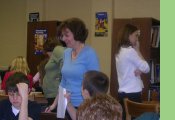
I can't help it. I'm passionate about including creative writing in the classroom. Every student in elementary or middle school should have the opportunity to write a short story.
I can't think of a better way for students to practice important writing conventions such as grammar, punctuation, style, voice, fluency, vocabulary, and syntax. Writing fiction exercises their imaginations, gives them a sense of ownership over their written work, and is fun.
Throw some history or science facts into the mix and students who write short fiction will be practicing more than language arts skills; they also will be required to include information which they are studying in other subject areas.
Here are some examples:
In North Carolina 4th graders study state history.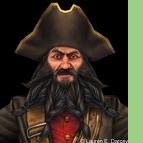 Students could write a story that includes the first child christened on American soil, Virginia Dare; the pirate Blackbeard; the Catawba Indians; or the gold rush in Cabarrus county. Students could write a story that includes the first child christened on American soil, Virginia Dare; the pirate Blackbeard; the Catawba Indians; or the gold rush in Cabarrus county.
In South Carolina 5th graders study ecosystems and oceans.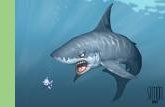 Their language arts and science teachers could challenge them to write a mystery using scientific facts. For example, what happened at Myrtle Beach that caused the shark population to suddenly decline? Their language arts and science teachers could challenge them to write a mystery using scientific facts. For example, what happened at Myrtle Beach that caused the shark population to suddenly decline?
In New York 7th graders study the human body and 8th graders study the Solar System.  Both topics lend themselves to science fiction. Both topics lend themselves to science fiction.
When you start brainstorming plot ideas, you'll find that there are as many ideas as students in your classroom. Or maybe even more!
Of course, if you need a book that will walk you through the process of writing short fiction, I just happen to have the perfect one for you.

|
|
|
HOW SOME SCHOOLS USED A
HISTORICAL NOVEL ACROSS THE CURRICULUM |
|
by Joyce
I've had the thrill of seeing my book Blue interpreted through subjects across the curriculum. I'll share a few links and pictures taken along the way.
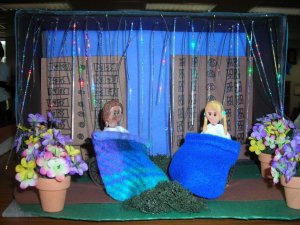
My characters, Imogene & Ann Fay meeting in the rain after sneaking out of their segregated wards in the polio hospital.
Using historical records and photos from LIFE Magazine, 7th grade math students at Granite Falls Middle School created a scale model of The Miracle of Hickory Polio Hospital.
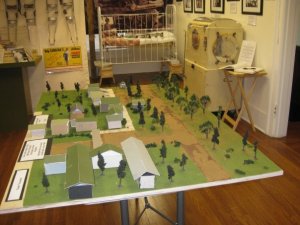
The model is now on display in a museum exhibit of Hickory, NC's 1944 emergency polio hospital.
Poems written & read by 2 Virginia 5th graders.
Click to listen.
Leasette's poem
Larissa's poem
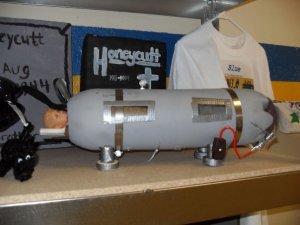
Iron lung created by 7th grader at Granite Falls Middle School provided an opportunity for a student to explore science, history, math, health, and lifestyle issues related to living in an iron lung.
Pam Brillisour (school media specialist) created a matrix for Using primary sources to examine the role of advertising techniques used during World War II.
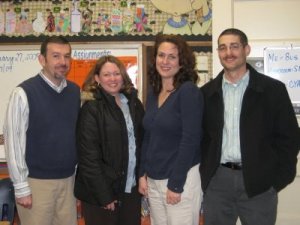
Last year, Team Tsunami Teachers at Granite Falls Middle School planned a unit around BLUE. This year Team Tsunami teachers traveled to Warm Springs, GA with their families to visit The Roosevelt Rehabilitation Institute. They videotaped their experiences so they could share them with students.
Language Arts, Teacher Randy Seldomridge sent me an update which included the following.
Students on the team read the novel. Blue, by Joyce Moyer Hostetter (local author), about a young girl, Ann Fay, who contracts polio. After studying about polio and other diseases in their Science classes, students were given the task of writing a paper as if they were a friend of Ann Fay’s, asking the March of Dimes to send her to Warm Springs for physical therapy.
The writing assignment is part of the state’s four writing assessments that are done during the year. Students must research the topic on this particular assignment. In the prompt, students are writing as if the year is 1945. They must tell facts about polio, how it is spread (or thought to be spread at the time), treatments that Warm Springs offers, and how the community would benefit from sending Ann Fay there.
*********
I have links to educational activities for BLUE (and my other books) on
My Books
page of my website.
www.joycemoyerhostetter.com

|
|
|
SUPPLEMENTING HISTORY WITH FICTION |
|
by Dr. Eric Groce
Dr. Eric Groce is professor of curriculum and instruction at Appalachian State University. Lucky for me, he’s chosen BLUE to demonstrate ways to use and authenticate historical fiction in the classroom. I asked him to address a few questions related to using historical fiction in the classroom. (Joyce)
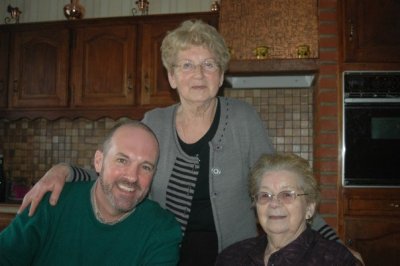
Eric Groce with his French Aunties - Marthe and Odette whose story he tells in his D-Day novel (in-progress). These ladies were 13 and 16 on June 1944 when American soldiers arrived at their doorstep.
Historical Fiction: Why should I use it?
Social studies textbooks have changed since I was a kid ---for the better. As the old commercial said, “You’ve come a long way baby!” For all the strides that texts have made, there is still significant room in the curriculum for supplemental literature. Historical fiction can add depth, context, and understanding at a more meaningful level than the state adopted text. It adds the human experience to topics students are studying and helps them imagine and experience life during that point in history.
The text may list combatants for D-Day and provide details of the date and time of the invasion as well as a colorful map. Historical fiction puts the reader into the mind of an eighteen year-old seasick boy from Arkansas who is approaching the Norman beach in a landing craft with his comrades. Readers feel his heart pounding, smell the salty sea mist on his face, and imagine the white knuckles gripping his rifle as he offers one last prayer before hitting the shore.
And what are the potential problems with using historical fiction?
When introducing historical fiction to students, there are a few issues to consider. Although most authors do an excellent job researching their topic, occasionally, some inaccuracies are contained in historical novels, even award winning literature! (See my article for more details) Some may present a stereotypical view of a minority group or a marginalized population. Teachers and librarians must decide whether to use the book while revealing the inaccuracies to their students or to select another title related to that time period or event.
Teachers will also want to note areas where the author has taken “creative license” to either embellish the historical record or even omit some aspect of an event. These notable expansions (romanticized accounts) or omissions are acceptable (it is historical FICTION) but care must be taken to ensure that students recognize those points and do not internalize them as fact. Reviewing author notes and the epilogue is a good starting point to separate fact from fiction. |
|
|
Muscle Up Your Science & History Assignments |
|
by Carol 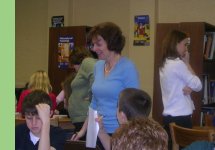
It's one thing for language arts teachers to focus on improving writing skills, but can science and social studies educators teach good writing practices?
As I mentioned in our first issue of Talking Story, students can "Jazz Up" their writing by replacing crutch or tired words with muscle words. This "show, don't tell" writing is important in every discipline. Consider the following examples. Which would you rather read?
Social Studies:
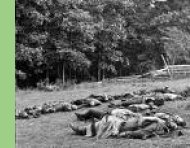
The soldier in the Confederate army was injured.
Or,
Shreds from the soldier's gray uniform clung to the young man's bloody body.
Science:
Our galaxy is awesome and moves

really, really fast.
Or,
Scientists think that our Solar System, which is 28,000 light years from the center of the Milky Way, moves about 600,000 miles per hour.
If you click here you'll find an article that was originally published in Middle Ground (February, 2009) discussing how you can use technology to practice "Show, Don't Tell" writing. |
|
|
Reviewed by Marcia Sattler 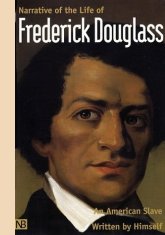
Frederick Douglass’s inspiring story could be used to integrate reading and writing (grades 8-10) with 19th century US history. This autobiography is a historically accurate account as Douglass (1818-1895) reviews his life as a slave and his eventual escape to freedom. Douglass uses first person viewpoint to vividly describe the physical horrors of slavery making his story personal and compelling. Douglass also uses objective detail without bitterness, hatred, or melodrama. His logical, straight forward manner starkly portrays the truth of the horrors of slavery. He clearly depicts slavery as dehumanizing to both the slave and the slaveholder.
From a human perspective, Douglass is not in a position to change his circumstances. However, because he recognizes God as having given him opportunities to turn negative situations into positive ones and because he has the sheer determination to do what is right, Douglass rises above his circumstances and becomes an eloquent abolitionist. Narrative of the Life of Frederick Douglass not only provides us with a glimpse into American life in the mid-nineteenth century, but also provides a powerful example of how one individual can contribute to righting injustices.
|
|
|
We'll talk about end of year and summer celebrations: museums, trips, books, and more! |
|
|
|
 |
 |
|
Some of Our Favorite Social Studies Titles |
|
Captain Mac by Mary Morton Cowan
Three Across: The Great Transatlantic Air Race of 1927 by Norman H. Finkelstein
Historical Fiction
Milkweed by Jerry Spinelli
A Single Shard Linda Sue Park
Crispin: The Cross of Lead by Avi
A Girl Called Boy, by Belinda Hurmence
The Bronze Bow by Elizabeth George Speare
Uncle Tom's Cabin by Harriet Beecher Stowe
To Kill a Mockingbird by Harper Lee
(For more historical fiction titles see "Recommended Lists" in Teaching the Story or search "Historical Fiction" on Carol's blog) |
|
|
If you're having trouble viewing this newsletter, click on
"View as Webpage".
(at the top) |
|
|
Congratulations to Karen Hummel Hassinger who won a copy of
My Fun Picture Dictionary.
She gave the book to her ESL teacher at Rosa Lee Carter School in Ashburn, Virginia.
Thanks to Kathleen Skotcher who donated the book! |
|
|
T-Shirt + Handouts = Cool Giveway! |
|
Email Us
with the words
Coupon for T-Shirt & Handouts
and we'll enter you in a chance to win this T-Shirt
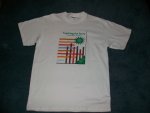
as well as several handouts from Carol's book,
Teaching the Story
to help your students write historical and science fiction.
|
|
|
Books to Supplement A Science Curriculum |
|
|
by Carol and Joyce
We offer Writers-in-Residence programs and would be happy to customize workshops for your grade level and school. Here are some topics to choose from:
- Pump Up the Narrative!
- Writing Memorable Memoirs
- Writing Across the Curriculum: Using Short Fiction to Supplement Science & Social Studies
- Jazz Up your Writing!
|
|
|
by Carol
In the fall I presented a workshop on "Writing Across the Curriculum" at the Virginia Gifted conference. Here are some descriptive paragraphs written by the participants. Their task was to collaboratively create and write about a scientific setting and an historical character.
SCIENCE
Shortly before earth rise, the only thing they could hear was the sound of their breath from the re-breather. He had long since learned how to bound over the dusty surface in spite of his awkward suit.
Soon he was far from the safety of the dome and his destination loomed closer. Standing at the rim of the deep, dark crater, he gazed down at the wreckage.
by Jacqui Cecalupo, Holeymead Elmentary, Albermarle County; Liana Spring, Baber Butler Elementary, Albermarle County
**********
SOCIAL STUDIES
As the night wore on, she continued to walk; exhausted by the miles behind her, yet encouraged by the thoughts of her final goal…freedom! She got her bearings from the Drinking Gourd and reflected back on the letter that started this journey…
Dear Brother,
I cannot believe that the purveyor of our goods was, in fact, a Negro man by the name of Thomas Bethune.
by Elizabeth Bourie, Norfolk Public Schools; Martha Nicholson, Alleghany Count Public Schools; Anne H. Moore Chesterfield County Public Schools
|
|
|
Dr. Eric Groce Recommends |
|
I enjoy finding other books for use in my classroom so I’ll pass one along. Mississippi Trial, 1955 is the story of the murder of Emmett Till, (and subsequent trial) a fourteen year old from Chicago who visited his relatives in the Mississippi Delta during the steamy summer of 1955. The author, Dr. Chris Crowe, an English professor at BYU, spent part of a summer in the Delta researching the story. An excellent read for teachers covering the civil rights era!
I learned of this event while teaching at Mississippi State University and looking for a novel to connect my students to local history. Crowe also published Getting Away With Murder, a nonfiction account of the events. Using the two selections together allows students to see the differences between genres and help them develop critical literacy skills.
|
|
|
Social Studies + Grammar + Technology = Fun Learning |
|
Check out this cool new book from Maupin House. Grammar Rulz
shows you how to teach grammar using four stories from commonly studied historical periods such as ancient Egypt and Rome. The CD comes with pre-formatted files to be used with SMART Boards. Click here to see a YouTube video about the book  . . |
|
|
Giveways for Your School, Home, or Library |
|
|
We want to hear what cross-curricular activities have worked well for you. Email them to us and we'll share them along with your name in a future issue of Talking Story.
|
|
|
by Joyce
I started a blog,
Next Classroom Over
to share activities teachers are using based on my books. You can see a few of the activities shown here as well as view slideshows with BLUE related art.
I'm ready to revive this blog so if you want to publicly share activities related to my books, do email them to me!
(pdfs, photos, lesson plans, etc)
|
|
|
